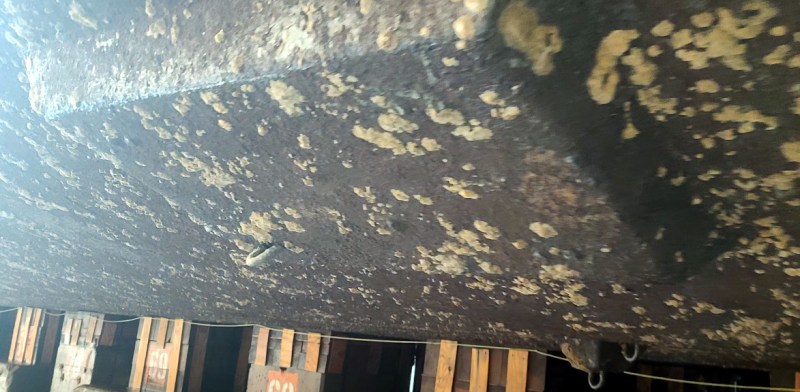
There’s a saying among recreational mariners that the word “boat” is actually an acronym for “bring out another thousand”, as it seems you can’t operate one for long without committing to expensive maintenance and repairs. But this axiom isn’t limited to just civilian pleasure craft, it also holds true for large and complex vessels — although the bill generally has a few more zeros at the end.
Consider the USS New Jersey (BB-62), an Iowa-class battleship that first served in the Second World War and is now operated as a museum ship. Its recent dry docking for routine repair work has been extensively documented on YouTube by curator [Ryan Szimanski], and in the latest video, he covers one of the most important tasks crews have to attend to while the ship is out of the water: inspecting and repairing the hundreds of patches that line the hull.
These patches aren’t to repair damage, but instead cover up the various water inlets and outlets required by onboard systems. When New Jersey was finally decommissioned in 1991, it was hauled out of the water and plates were welded over all of these access points to prevent any potential leaks. But as the Navy wanted to preserve the ship so it could potentially be reactivated if necessary, care was taken to make the process reversible.

Squatting underneath the 270 meter (887 feet) long battleship, [Ryan] points out one of these patches and explains how they were installed. Rather than welding a flat plate over the hole, the patch was boxed out from the surface so that it could be easily cut off without damaging the ship’s hull. A set of eyelets were also welded to the hull around the opening, as they would have been used to help hoist the heavy patch into position.
Once installed, a pressure gauge and an air hose would be attached to a opening built into the patch. Compressed air would be pumped in, and the pressure would be monitored to see if there were any leaks. Should the pressure drop, spraying soapy water on the weld seams would usually reveal where the air was dribbling out of.
According to [Ryan], only one of these patches is known to have developed a leak in the 32 years since the bottom of the ship was last inspected and serviced. But given the fact that the ship won’t be removed from the water again for the next several decades, the plan is to go around pressure testing the patches and repairing any welds that might not be up to standard.
The Battleship New Jersey YouTube channel is a phenomenal resource for anyone interested in the nuts-and-bolts of warships, with videos covering everything from the ship’s original WWII equipment to the modern electronic retrofits made to the ship in the 1980s and 90s.
No comments:
Post a Comment